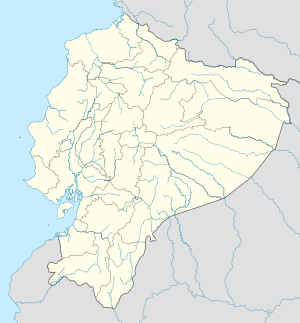
The Battle of Boyacá (1819), also known as the Battle of Boyacá Bridge was a decisive victory by a combined army of Venezuelan and New Granadan troops along with a British Legion led by General Simon Bolivar over the III Division of the Spanish Expeditionary Army of Costa Firme commanded by Spanish Colonel José Barreiro. This victory ensured the success of Bolívar's campaign to liberate New Granada. The battle of Boyaca is considered the beginning of the independence of the north of South America, and is considered important because it led to the victories of the battle of Carabobo in Venezuela, Pichincha in Ecuador, and Junín and Ayacucho in Peru. New Granada acquired its definitive independence from the Spanish Monarchy, although fighting with royalist forces would continue for years.
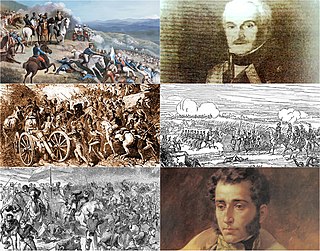
The Ecuadorian War of Independence, part of the Spanish American wars of independence of the early 19th century, was fought from 1809 to 1822 between Spain and several South American armies over control of the Real Audiencia of Quito, a Spanish colonial jurisdiction which later became the modern Republic of Ecuador. The war ended with the defeat of the Spanish forces at the Battle of Pichincha on May 24, 1822, which brought about the independence of all the lands of the Real Audiencia of Quito.
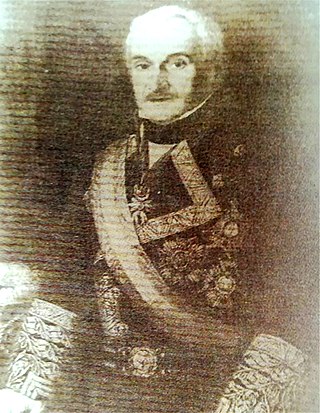
Melchior de Aymerich was a Spanish general and provincial administrator, serving as the last president of the Royal Audience of Quito from April until May 1822.

Francisco José de Caldas was a Neogranadine lawyer, military engineer, self-taught naturalist, mathematician, geographer and inventor, who was executed by orders of General Pablo Morillo during the Spanish American Reconquista for being a forerunner of the fight for the independence of New Granada. Arguably the first Colombian scientist, he is often nicknamed "El Sabio".
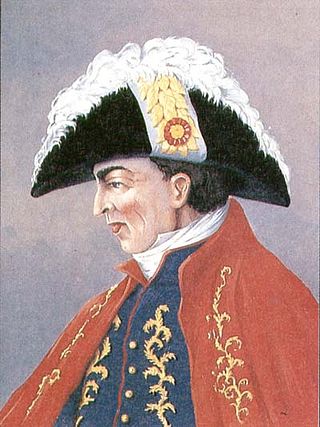
Juan José Francisco de Sámano y Uribarri de Rebollar y Mazorra, was a Spanish military officer and the last viceroy of New Granada from March 9, 1818 to August 9, 1819, during the Colombian War of Independence.

The Real Audiencia of Quito was an administrative unit in the Spanish Empire which had political, military, and religious jurisdiction over territories that today include Ecuador, parts of northern Peru, parts of southern Colombia and parts of northern Brazil. It was created by Royal Decree on 29 August 1563 by Philip II of Spain in the city of Guadalajara. It ended in 1822 with the incorporation of the area into the Republic of Gran Colombia.

The Colombian War of Independence began on July 20, 1810 when the Junta de Santa Fe was formed in Santa Fe de Bogota, the capital of the Spanish colonial Viceroyalty of New Granada, to govern the territory autonomously from Spain. The event inspired similar independence movements across Latin America, and triggered an almost decade-long rebellion culminating in the founding of the Republic of Colombia, which spanned present-day Colombia, mainland Ecuador, Panama, and Venezuela, along with parts of northern Peru and northwestern Brazil.
The Army of Galicia was a Spanish military unit that took part in the Peninsular War against Napoleon’s French Grande Armée.

Rosa Zárate y Ontaneda, also known simply as Rosa Zárate, was an Ecuadorian feminist involved in the Ecuadorian independence movement during the 19th century.

The Free Province of Guayaquil was a South American state that emerged between 1820 and 1822 with the independence of the province of Guayaquil from the Spanish monarchy. The free province had a provisional government and constitution until its annexation by Gran Colombia in 1822. Its successor was the Department of Guayaquil forming part of Gran Colombia.
The Spanish province of Guayaquil had been separated from the Viceroyalty of Peru and in those days it only depended legally on the court of the Real Audiencia de Quito. About a decade later, the Departments of Guayaquil, Azuay, and Ecuador separated from Gran Colombia forming the current Ecuador.

The October 9 Revolution was a successful revolt against the Spanish Empire in Guayaquil on October 9, 1820. It was led by the General Antonio José de Sucre and directed by Simón Bolívar. The revolt established a revolutionary junta and created the Free Province of Guayaquil, an independent state. The independence of Guayaquil revived the war of independence of the Real Audiencia de Quito as part of the Spanish American wars of independence. Prominent events in the revolution include the uprising of the Spanish garrison in the city of Guayaquil and the control of the Pacific by the Liberating Expedition of Peru, under the command of José de San Martín.
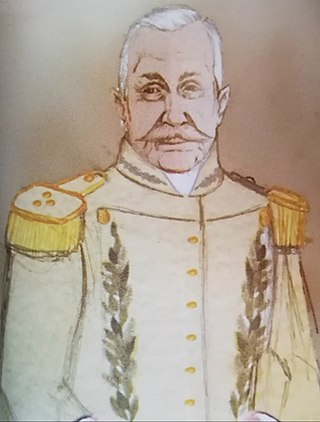
Toribio Montes y Pérez was a soldier and Spanish colonial governor. He governed Puerto Rico between 1804 and 1809 and presided over the Royal Audience of Quito from 1811 to 1817.

Carlos de Montúfar y Larrea-Zurbano was a Creole nobleman and soldier considered one of the liberators of current Ecuador. He fought alongside Simón Bolívar and was nicknamed El Caudillo.
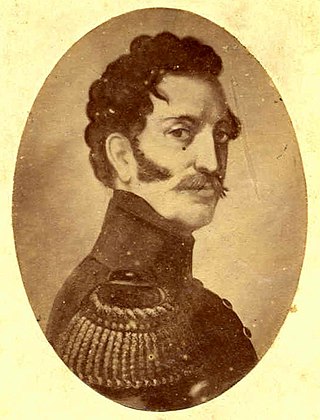
José María Cabal was a Neogranadine military and political leader during the Colombian War of Independence.
The Quito Revolution (1809–1812) was a series of events that took place between 1809 and 1812 in the Real Audiencia de Quito, which led to the establishment of a short-lived State of Quito, and which can be considered as the seed of the independence movements that ended up forming the current Republic of Ecuador.

The Nariño Southern Campaign was a series of military actions between December 1813 and May 1814, under command of Antonio Nariño, leader of the Republican State of Cundinamarca, against Spanish forces in the south of New Granada.
It had the objective of dislodging the Royalist presence in the south after the defeat of the first independence movement in the province of Quito (1812), a fact that put the New Granada provinces, that had retained their early independence, at risk. Nariño's army took the city of Popayán and the surroundings of Pasto, but was decisively defeated in the Battle of Ejidos de Pasto, ending the campaign in total failure.

The Battle of Camino Real, was the first battle in the Ecuadorian War of Independence, that took place on 9 November 1820. The battle was fought between Royalist soldiers in support of the Spanish Empire, and the Patriot forces of the Free Province of Guayaquil, who won the battle.

The Battle of Yaguachi or Battle of Cone was a military confrontation that occurred on 19 August 1821 between Guayaquil independence troops and Grancolombian reinforcements, led by Antonio José de Sucre, against Royalist troops led by Colonel Francisco González. The battle was fought near the city of Yaguachi, current Province of Guayas in Ecuador, and was a victory for the Patriots which ensured the definitive independence of the Free Province of Guayaquil.

The Pasto Campaign was a series of military operations carried out between 1822 and 1824 by Gran Colombia against the Royalist strongholds of San Juan de Pasto and Patía, Cauca in present-day Southern Colombia.
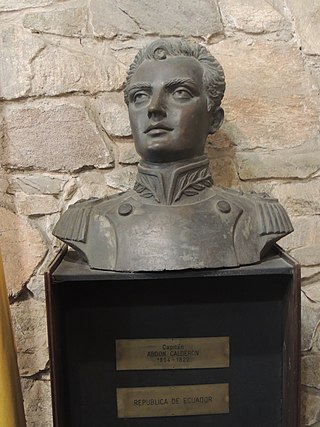
Abdón Calderón Garaycoa was a hero of Ecuador's war of independence. He died at age 17 from wounds sustained at the Battle of Pichincha. Such was his heroism that Simón Bolívar not only promoted him post-mortem but also decreed that in the future the first company of the Yaguachi battalion be reviewed as if he were alive, an honor rarely seen in military history.
